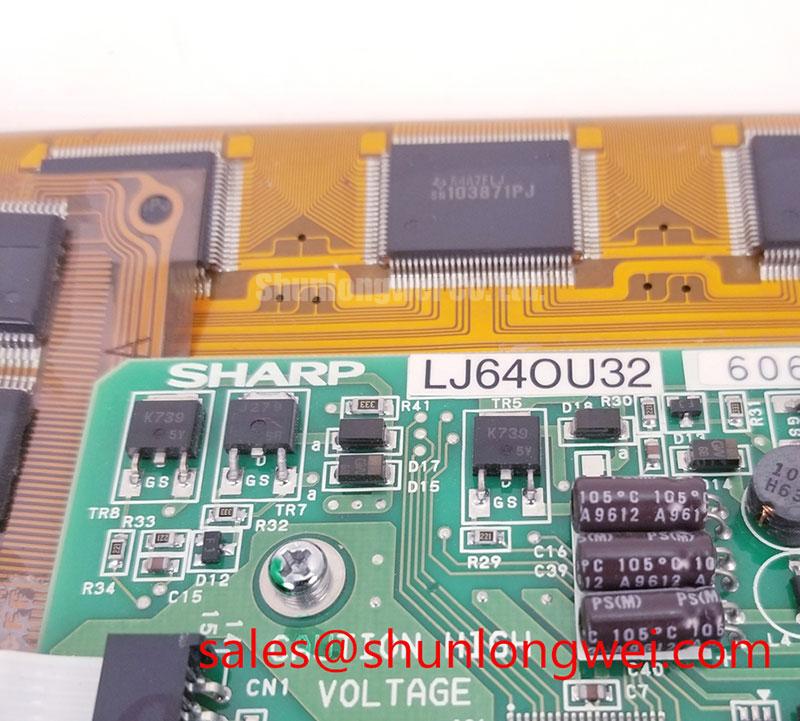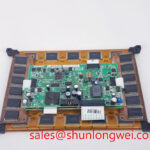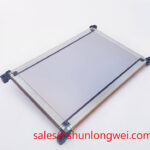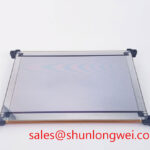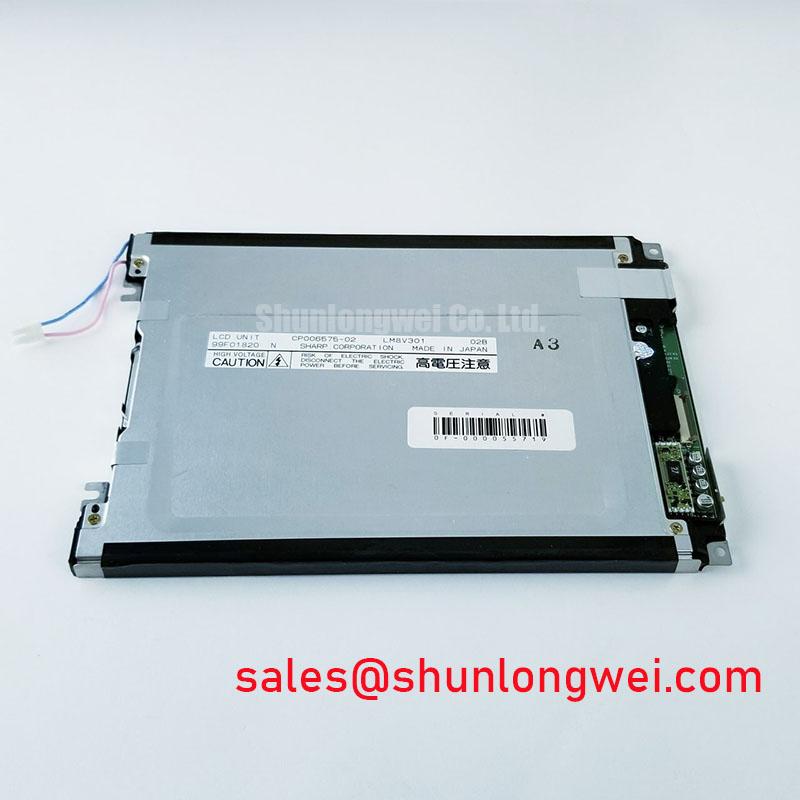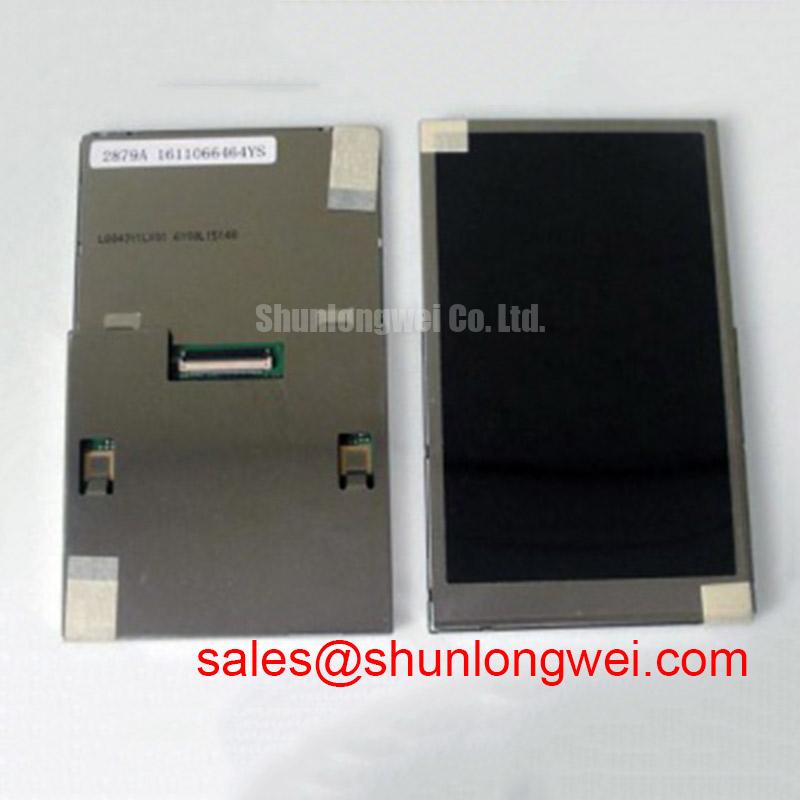LJ640U32: Sharp 640x400 EL Display for Unmatched Reliability in Legacy Systems
Content last revised on October 22, 2025.
Product Overview & Key Specifications
Engineered for Longevity in Critical HMI Applications
The Sharp LJ640U32 is an Electroluminescent (EL) display module that delivers exceptional readability and proven long-term reliability for sustaining critical industrial and medical equipment. Featuring a 640x400 resolution, a typical contrast ratio of 20:1, and a viewing angle exceeding 160°, this display is built for performance where it matters most. Its key engineering benefits include the complete elimination of backlight failure points and guaranteed drop-in compatibility for a wide range of legacy systems. For engineers seeking a direct replacement for aging control panels, the LJ640U32 provides a form-fit-function solution that enhances visibility in demanding low-light environments. For legacy CNC and medical systems requiring absolute display reliability, the solid-state EL technology of the LJ640U32 is the definitive choice.
Application Scenarios & Value
System-Level Benefits in Critical Sustainment Engineering
The primary value of the LJ640U32 lies in its role in sustainment engineering, particularly for high-value capital equipment. Consider the challenge of a failing operator panel on a 15-year-old CNC machine. A complete system replacement is cost-prohibitive due to re-tooling and validation expenses. The engineer's challenge is to find a display that is mechanically and electrically compatible to minimize downtime. The Sharp LJ640U32 addresses this directly. Its 640x400 resolution and 4-bit parallel interface were standards for an entire generation of industrial controls, enabling a straightforward legacy system retrofit.
Furthermore, its emissive EL technology provides a significant upgrade over original displays. The amber-on-black output offers superior clarity and an extremely wide viewing cone, reducing operator error and eye fatigue—a critical factor in environments where multiple personnel need to monitor a single HMI (Human-Machine Interface). While modern systems may utilize full-color TFT panels like the G104S1-L01, the LJ640U32 remains indispensable for applications where monochrome clarity and proven long-term reliability are paramount.
Key Parameter Overview
Decoding the Specs for Operational Longevity
The technical specifications of the LJ640U32 are tailored for seamless integration and robust performance in established industrial frameworks. The parameters below highlight the display's core capabilities.
| Optical Characteristics | |
| Display Technology | Electroluminescent (EL) Display |
| Resolution | 640 x 400 Dots |
| Luminance (Typical) | 50 cd/m² |
| Contrast Ratio (Typical) | 20:1 |
| Viewing Angle | >160° (Horizontal/Vertical) |
| Display Color | Amber |
| Electrical Specifications | |
| Logic Supply Voltage (Vcc) | +5 VDC |
| Drive Supply Voltage (Vdd) | +22 VDC |
| Interface | 4-Bit Parallel LDI |
| Mechanical & Environmental | |
| Outline Dimensions (W x H x D) | 228.5 x 158.5 x 35.0 mm |
| Active Area (W x H) | 191.9 x 119.9 mm |
| Weight | 850g |
| Operating Temperature Range | 0°C to +50°C |
Download the LJ640U32 datasheet for detailed specifications and performance curves.
Technical Deep Dive
A Closer Look at Solid-State Electroluminescence for Unmatched Reliability
The defining feature of the LJ640U32 is its Electroluminescent (EL) technology. Unlike TFT-LCD panels that require a separate backlight unit and liquid crystal layer to modulate light, an EL display is emissive. It operates on a simple, robust principle: a phosphor layer, sandwiched between electrodes, emits light directly when an electric field is applied. This solid-state design inherently eliminates the most common failure points of LCDs—the backlight and its associated inverter circuitry.
This structural difference is crucial for long-term reliability in demanding settings. The high contrast ratio of 20:1, which is a measure of the difference between the brightest and darkest parts of the screen, can be thought of like the difference between writing with a light grey pencil versus a sharp black marker. The crisp, self-illuminated pixels of the LJ640U32 ensure that data is unambiguous. For a system designer, this means superior resistance to shock and vibration. The LJ640U32's construction is like a solid brick compared to the multi-layered 'house of cards' of an older LCD. This physical toughness makes it the definitive choice for HMI panels on high-vibration equipment like stamping presses, weaving machines, and other forms of heavy industrial automation.
Frequently Asked Questions (FAQ)
Engineering Questions on Integration and Performance
What is the primary advantage of the EL (Electroluminescent) technology in the LJ640U32 compared to a conventional LCD?
The primary advantage is reliability. Because EL technology is self-emissive, it has no backlight, which is the most common failure component in an LCD screen. This solid-state design provides superior resistance to shock and vibration and offers a longer operational lifespan in harsh industrial environments.
How do the dual voltage inputs (+5V Logic, +22V Drive) impact the integration of the LJ640U32 into a legacy system?
The dual-voltage requirement is characteristic of displays from this era and is a critical factor for ensuring drop-in compatibility. Most host systems designed for this type of display will already have a power supply configured to provide both the +5V for the control logic and the higher +22V rail for illuminating the display panel. This simplifies replacement by avoiding the need for additional power conversion circuitry.
Does the 50 cd/m² luminance rating provide sufficient readability in typical industrial settings?
Yes, for its intended application. The perceived brightness and readability of a display are a function of both luminance and contrast ratio, especially in controlled lighting. Because the LJ640U32 has a very high contrast ratio with true black pixels (they are simply "off"), the 50 cd/m² amber output is exceptionally clear and easy to read in the low-to-moderate ambient light conditions found in most factory floors and control rooms.
Engineering & Procurement Support
Verifying Compatibility for Your System
For engineers and procurement managers focused on system sustainment, confirming form, fit, and function is paramount. We recommend a thorough review of the official datasheet to cross-reference dimensions, mounting points, and interface pinouts against your existing system requirements. Analyzing these details is the critical final step in qualifying this display for your specific application.

